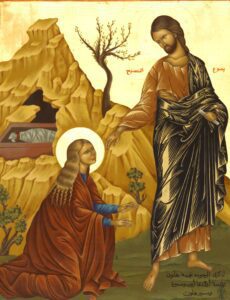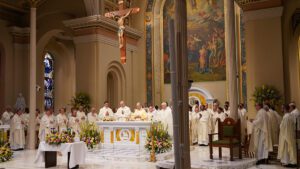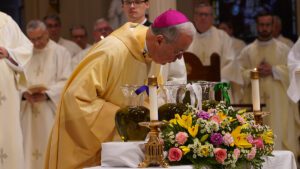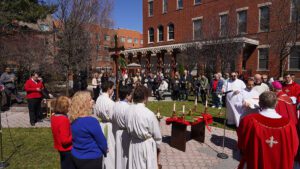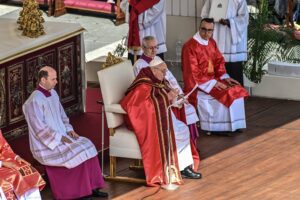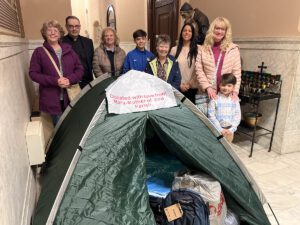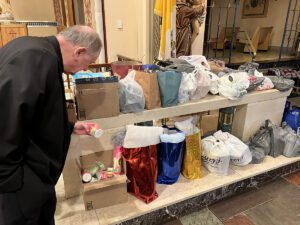ROME (CNS) – Jesus never abandons anyone; he has come to save, serve and accompany everyone, Pope Francis told young inmates.
“If we listened to these (lessons) from Jesus, life would be so wonderful because we would rush to help one another instead of ripping off each other, taking advantage of each other like wise guys teach us,” he said in his homily during Mass at Rome’s Casal del Marmo prison for minors.
Helping others and lending a hand are “human, universal gestures, but they come from a noble heart. And Jesus today with this celebration wants to teach us this: nobility of the heart,” he said during the Holy Thursday Mass of the Lord’s Supper April 6.
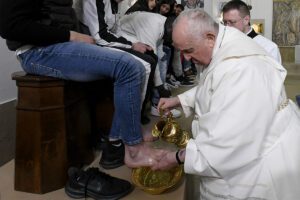
Less than one week after he was discharged from the hospital for a respiratory infection, Pope Francis presided over the Mass and washed the feet of 12 young people of different nationalities, ethnicities and faiths, including a Muslim and two women, who are housed at the juvenile detention facility.
He entered and exited the chapel in a wheelchair and the pope’s master of liturgical ceremonies, Msgr. Diego Giovanni Ravelli, was the main celebrant at the altar.
However, during the rite of the foot washing, the pope stood and moved before the 12 inmates who were seated on a raised platform, like other years, so the pope did not have to kneel or stoop to gently wash, dry and kiss each foot.
The ceremony of washing another’s feet “is not something folkloric,” he said, explaining the ritual. It is a gesture that shows “how we are to be with one another.”
The pope talked about the worry or fear of not being worthy of such a gesture since “each of us can say, ‘But if the pope knew the things I have inside me…’. But Jesus knows about it, and he loves us as we are, and he washes the feet of each one of us.”
“Jesus is never frightened by our weaknesses, he is never frightened because he has already paid (for our sins),” Pope Francis said. “He only wants to accompany us, he wants to take us by the hand so that life will not be so hard for us.”
It is hard to see so many people in the world taking advantage of others, to see how many people are trapped in a situation with no way out, to see so many injustices and broken families, he said.
If anyone has avoided serious hardship, it is not because they are better than others, he said, “it’s because of God’s grace!”
“Every one of us can slip, each one of us. And this awareness, this certainty that each one of us can slip is what gives us the ‘dignity’ — listen to this word — the ‘dignity’ of being sinners,” the pope told the inmates. “And Jesus wants us that way and that’s why he wanted to wash our feet an say, ‘I have come to save you, to serve you.'”
Held in the prison’s small chapel, the Mass was the second of two Holy Thursday liturgies over which the pope presided, the first being a morning chrism Mass in St. Peter’s Basilica.
The Casal del Marmo prison for minors was the same facility the pope visited 10 years ago, just 15 days after his election, when he broke with a papal Holy Week tradition of celebrating the evening Mass at a Rome basilica. The prison holds inmates who are between the ages of 15 and 25, although all were minors at the time of their sentencing.
Since becoming pope, he has chosen other prisons and different places for the ritual, like a rehabilitation center for people with severe physical disabilities and a center for migrants and refugees.
After the Mass, the pope blessed a plaque for the chapel that was dedicated to Blessed Pino Puglisi, an outspoken anti-Mafia priest in Palermo, Sicily, who was assassinated in 1993.
The pope greeted a number of young inmates who also gave him several gifts made in the prison: a wooden cross, cookies and pasta. The pope also distributed rosaries and chocolate eggs to some of the nearly 100 people at the Mass, including inmates, corrections officers and prison staff.

